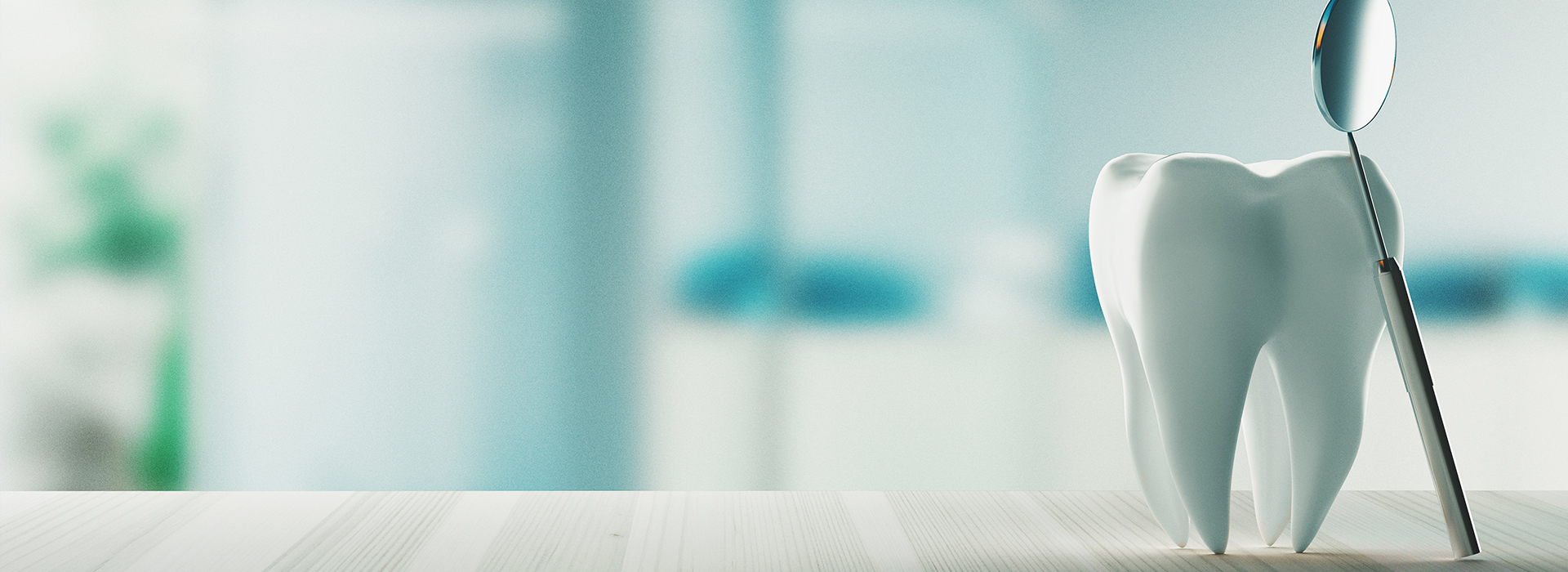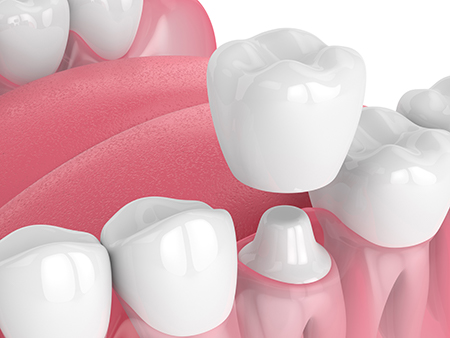
At Cherokee Smiles Dental, we combine modern techniques with thoughtful, patient-centered care to restore and preserve smiles. Our approach emphasizes durable solutions that look and feel natural, and we stay current with material science and restorative workflows so patients receive predictable, long-lasting results.
Although tooth enamel is the hardest tissue in the body, teeth are still vulnerable to decay, fracture, and wear. Small cavities can often be addressed with dental fillings, but when a tooth has lost substantial structure—because of extensive decay, a large old filling, trauma, or the effects of grinding—a full-coverage restoration is usually the safer, more reliable option.
Dental crowns restore a tooth’s form, function, and strength. Advances in ceramic materials now allow crowns to be metal-free while delivering excellent durability and a highly natural appearance. These all-ceramic restorations are engineered to blend with surrounding teeth and resist the staining and marginal darkening that can occur with metal-based options.
Our team tailors every treatment plan to each patient’s goals and oral health needs. We focus on clear communication and careful planning so you understand why a crown is recommended, what to expect during treatment, and how to maintain your restoration for years to come.
A crown is chosen when preserving the remaining tooth structure and restoring proper bite function outweigh the benefits of a simpler filling. Rather than repairing only the damaged portion, a crown covers the entire visible tooth above the gumline, providing a protective shell that prevents further breakdown under normal chewing forces.
Common reasons to recommend a crown include teeth with large decay that compromise strength, fractures or cracks that jeopardize the tooth’s integrity, and teeth that have been weakened by the removal of old, extensive restorations. Teeth that support bridges or replace missing teeth with implants also require crowns designed to withstand bite forces over time.
Crowns are often the restoration of choice after root canal therapy because treated teeth can become more brittle and prone to fracture. They are also an excellent option for correcting noticeable cosmetic concerns—such as severe staining, irregular shape, or teeth that are undersized—when conservative cosmetic procedures are insufficient.
Deciding whether to place a crown involves assessing the tooth’s remaining structure, bite dynamics, aesthetic goals, and long-term prognosis. During your visit, we evaluate these factors and explain the advantages of a crown versus alternative treatments, so you can make an informed decision.

All-ceramic crowns are designed to interact with light much like natural tooth enamel, producing translucency, depth, and a lifelike surface sheen. This makes them particularly well suited for front teeth and any situation where matching adjacent teeth is a primary concern. Modern ceramics can be layered, stained, and glazed to achieve a realistic color gradient and texture.
Because ceramic crowns are metal-free, they do not create the dark line at the gumline that can occur with metal-based restorations. They are also generally gentler on surrounding soft tissues and less likely to cause aesthetic or allergic concerns related to metal. For patients who prefer a fully ceramic option, these materials offer a combination of beauty and biocompatibility.
Beyond appearance, contemporary ceramics provide strong mechanical properties. Newer formulations and manufacturing techniques—such as milled monolithic designs or reinforced glass-ceramics—deliver the strength needed for many posterior applications while maintaining a refined, tooth-like appearance.
In selecting a ceramic crown, we balance aesthetic demands with functional requirements so the finished restoration looks authentic and performs reliably under the stresses of daily use.
Not all ceramic crowns are the same. Different ceramic systems offer distinct combinations of translucency, strength, and wear characteristics; the ideal material depends on the tooth’s location and the forces it must withstand. Understanding the options helps set realistic expectations for appearance and longevity.
Lithium disilicate is a popular ceramic for its attractive translucency and good strength, making it a frequent choice for front and premolar crowns. Its optical properties often produce excellent color integration with adjacent teeth. Leucite-reinforced porcelains provide a delicate, natural appearance and remain a useful option for select cosmetic situations.
Zirconia crowns—especially monolithic or solid zirconia—offer exceptional strength and are commonly selected for molars or heavily loaded restorations. High-translucency zirconia has evolved to provide improved aesthetics while retaining durability, which expands zirconia’s suitability to more visible areas of the mouth.
Our team considers factors such as bite patterns, opposing dentition, tooth position, and cosmetic goals when recommending a material. We explain the trade-offs between maximum strength and maximum translucency so you can choose a crown that meets both functional needs and visual expectations.

The pathway to a finished crown typically begins with a thorough evaluation and diagnostic imaging to confirm the tooth’s health and the surrounding support structures. Once a crown is recommended, we prepare the tooth by removing decay or weakened material and shaping the remaining tooth to create a stable foundation for the restoration.
Impressions may be taken digitally with an intraoral scanner or captured using traditional impressions, depending on the case. Digital workflows often allow for precise communication with the dental lab and can shorten turnaround times. While the crown is being fabricated, a temporary restoration protects the tooth and maintains function and appearance.
When your custom ceramic crown returns from the lab or is milled in-office, we verify fit, contacts, shade match, and occlusion before final cementation. Careful adjustments ensure the crown integrates seamlessly with your bite and neighboring teeth. We provide guidance on how to care for your new restoration and what to expect in the days following placement.
Regular dental hygiene and routine checkups help preserve the crown and the supporting tooth. With appropriate care and attention to habits like grinding or using teeth as tools, ceramic crowns can provide many years of dependable service.

Our practice emphasizes precise planning, modern materials, and clear communication. We take the time to explain each step of the restorative process and present material options that address both cosmetic and mechanical demands. This thoughtful approach helps patients feel confident about their treatment choices.
We invest in current technology—digital imaging, shade-matching tools, and advanced laboratory partnerships—to support predictable outcomes. More importantly, we tailor the care plan to your individual needs rather than applying a one-size-fits-all solution, so your crown is designed to perform in your mouth, not just on paper.
Cherokee Smiles Dental blends technical skill with a focus on patient comfort and long-term oral health. If a ceramic crown is the recommended path for your smile, you can expect compassionate care, careful fabrication, and follow-up aimed at preserving both the restoration and the tooth beneath it.
In summary, ceramic crowns are a versatile and aesthetically pleasing option for restoring teeth that require full coverage. They combine improved materials science with refined clinical techniques to deliver restorations that look natural and withstand everyday function. Contact us to learn more about whether a ceramic crown is the right choice for your smile.

While a dental filling is designed to replace a portion of a decayed or damaged tooth, a dental crown offers full coverage to restore the tooth’s entire outer surface. A well-fitting dental crown not only protects and strengthens the underlying tooth structure, but it also restores the tooth’s appearance and function.
The procedure for getting an all-ceramic crown is much like the procedure for getting any other type of crown. In all cases, the tooth needs to be prepared, an impression taken, and a permanent crown cemented into place. A single all-ceramic crown can typically be fabricated over the course of two visits. However, with CAD/CAM technology, a same-day crown can be fabricated from start to finish in a single visit. With the first approach, a temporary crown is typically worn until the second visit, when the permanent restoration is placed. As with every treatment plan, our office will explain your best options in care.
As the name implies, a temporary crown is only worn for a short time until the permanent crown is placed. A temporary crown is typically fabricated from durable tooth-colored dental acrylics. While designed to protect the underlying tooth between appointments, and until your new permanent crown gets placed, a temporary crown is also fabricated to look like a natural tooth and maintain the look of your smile.
While you should feel better having an attractive and functional tooth to restore your smile, your tooth may feel a little sensitive following treatment. This initial sensitivity will subside. We take great care to make sure your new restoration looks great, fits well, and your bite is perfect. However, we’re always happy to make any minor adjustments to ensure your comfort.
With some exceptions, teeth with root canal procedures are typically restored and protected from further damage with a full-coverage crown. Based on what’s best for your smile, our office will recommend the most appropriate restoration to maintain the health and longevity of your tooth following a root canal procedure.
A dental crown is a long-term restoration that, if properly cared for, can serve you well for many years to come. Once your new crown is placed, it requires the same brushing, flossing, and periodic checkups as your natural teeth. Avoid biting your fingernails and chewing on hard or sticky objects such as ice, pencils, or taffy, which can damage or loosen your crown. Remember, clenching and grinding your teeth puts excessive pressure on both natural teeth and dental restorations. Unless treated, this habit can compromise the longevity and integrity of your dental work, including crowns.
Although your new all-ceramic crown restores the tooth's strength, form, and function, you can still develop dental disease in the absence of proper care. To prevent gum disease and tooth decay, it’s essential to brush and floss as instructed and see our office for routine checkups, cleanings, and care.
How long a dental crown lasts depends on various factors, including your level of oral care, diet, and oral habits. While the standard answer is that dental crowns can last anywhere from 5 to 15 years, existing literature confirms that most dental crowns remain in place at 15 to 20 years.
At the office of Cherokee Smiles Dental, we strive to provide the highest quality of care to address all your dental needs. Once we’ve had the opportunity to examine your smile, we can give you a clear picture of any dental issues that are present, along with a quote for how much treatment will be. The cost of dental crowns can vary a little, depending on the type of crown and its location. Our goals are to provide the highest quality of care and help patients begin treatment without additional financial stress or delay. We’re always happy to answer all your questions on dental insurance coverage, available financing, and payment plans.
Coverage for all-ceramic crowns depends on your dental insurance plan. Today, many dental plans provide some level of coverage for all-ceramic crowns. At the office of Cherokee Smiles Dental, we work with patients to optimize their dental benefits and get the care they need to maintain healthy and beautiful smiles!
At Cherokee Smiles Dental, ceramic crowns are full-coverage restorations made entirely from advanced ceramic materials that mimic the optical and physical properties of natural tooth enamel. Unlike traditional crowns that use a metal substructure with a porcelain overlay, all-ceramic crowns are metal-free and eliminate the dark margin that can appear at the gumline. Modern ceramics are engineered for both aesthetics and strength, allowing clinicians to select materials that best balance translucency and durability for each tooth.
Ceramic crowns also differ in how they interact with surrounding tissues and opposing teeth; they are generally more biocompatible and less likely to cause metal-related aesthetic or allergic concerns. Advances in CAD/CAM technology and laboratory techniques further distinguish ceramic restorations by enabling precise fits and lifelike surface characterization. These attributes make ceramic crowns a preferred option when a natural appearance and a metal-free solution are important.
A ceramic crown is typically recommended when a tooth has lost substantial structure and a filling would not provide sufficient strength or long-term protection. Examples include teeth with large areas of decay, extensive old restorations that have weakened the remaining tooth, fractures, or teeth worn down from grinding. Choosing a crown preserves the tooth by covering and reinforcing the remaining structure, rather than replacing only the damaged portion.
The decision to place a crown also considers functional factors such as bite forces and the tooth's role in chewing, as well as aesthetic needs when the tooth is visible. For teeth that will support bridges or abutments, or for teeth that have undergone root canal therapy, crowns are often the safest restorative choice. During an evaluation the dentist will explain why a crown is preferred and compare it to conservative alternatives so patients can make an informed decision.
Ceramic crowns are designed to interact with light in a manner similar to natural enamel, producing translucency, depth, and a lifelike sheen that helps them blend with adjacent teeth. Technicians can layer, stain, and glaze ceramic restorations to reproduce subtle color gradients and surface texture, while digital shade-matching tools assist in achieving an accurate color match. Because they are metal-free, ceramic crowns avoid the gray or dark lines at the margin that can occur with metal-based options.
Selection of the specific ceramic and fabrication technique plays a key role in the final appearance; for example, lithium disilicate often provides excellent translucency for front teeth, while high-translucency zirconia can combine strength and esthetics for visible areas. The clinician and laboratory collaborate on shade selection, characterization, and contouring so the finished crown integrates seamlessly with the patient s smile. Proper polishing and glazing also help the restoration resist staining and maintain its natural look over time.
There are several ceramic systems commonly used for crowns, each offering a different balance of translucency, strength, and wear properties. Lithium disilicate is prized for its attractive optical qualities and good strength, making it a frequent choice for anterior and premolar crowns, while leucite-reinforced porcelains are selected for delicate cosmetic cases. Zirconia, especially in monolithic or reinforced forms, provides exceptional strength for molars and heavy-load situations, and newer high-translucency formulations broaden zirconia s use in more visible areas.
The ideal material is chosen based on factors such as the tooth s location, a patient s bite dynamics, opposing dentition, and aesthetic goals. The dental team discusses the trade-offs between maximum strength and maximum translucency so patients understand expectations for appearance and longevity. By matching material properties to functional demands, the practice aims to deliver a restoration that performs reliably and meets cosmetic needs.
The process typically begins with a comprehensive evaluation and diagnostic imaging to assess the tooth s health, the root and surrounding bone, and the bite relationship. When a crown is recommended the tooth is prepared by removing decay or compromised material and shaping the remaining structure to create a stable foundation for the restoration. Impressions are then taken either digitally with an intraoral scanner or with traditional materials, and a provisional crown protects the tooth while the final restoration is fabricated.
Depending on the case, crowns may be milled in-office or produced by a dental laboratory; when the ceramic crown returns it is tried in, adjusted for fit, contacts and occlusion, and then permanently cemented or bonded. The clinician checks shade match and makes fine adjustments to ensure comfortable function and harmonious aesthetics. Post-placement instructions and follow-up appointments help monitor the restoration and address any sensitivity or occlusal concerns.
Ceramic crowns can provide many years of reliable service when maintained with good oral hygiene and regular dental care, though individual longevity varies with factors like bite forces, oral habits, and the quality of the supporting tooth. Patients should brush twice daily, floss around the restoration, and attend routine checkups so the dentist can evaluate crown integrity and the health of adjacent tissues. Avoiding habits such as using teeth to open packages or chewing on hard objects reduces the risk of chipping or fracture.
For patients who grind or clench, the dentist may recommend a nightguard to protect crowns and natural teeth from excessive wear. Routine professional cleanings and early attention to any signs of loosening or sensitivity help preserve both the restoration and the underlying tooth. With attentive care and appropriate protective measures, ceramic crowns can perform effectively for many years.
Ceramic crowns are widely regarded as safe and biocompatible for most patients, particularly because they are metal-free and less likely to provoke allergic reactions or soft tissue discoloration. However, like any restorative material they carry some risks, including the potential for chipping, fracture, or wear of opposing teeth depending on material selection and occlusal forces. The clinician evaluates these factors and recommends a ceramic type that minimizes risk while meeting aesthetic goals.
Occasional sensitivity can occur after tooth preparation, but this typically subsides as the tooth adjusts; persistent or severe symptoms should be reported so they can be assessed. Proper tooth preparation, precise fit, and careful occlusal adjustment are important steps that reduce complications and improve long-term outcomes. Patients are encouraged to follow post-operative guidance and maintain regular dental visits for monitoring.
Ceramic crowns are commonly used to restore teeth after root canal therapy because endodontically treated teeth can be more brittle and benefit from full-coverage protection. A crown helps reinforce the remaining tooth structure and restore normal chewing function, and the dentist will evaluate whether additional buildup or a post is required to support the restoration. For implant-supported teeth, a ceramic crown is fabricated to attach to an abutment and is designed to replicate the form and function of a natural tooth.
When planning implant or post-and-core restorations the team considers factors such as the implant system, abutment material, and load distribution to select an appropriate ceramic and design. Zirconia and other high-strength ceramics are often used where increased fracture resistance is needed, while esthetic zones may favor materials with enhanced translucency. Close coordination between the clinician and the laboratory ensures the crown fits precisely and performs well in its intended role.
During the crown preparation appointment most patients experience minimal discomfort because the area is numbed with local anesthesia and the work is performed efficiently to limit time in the chair. After the appointment some sensitivity or mild soreness of the gums and surrounding tissues is common as the anesthesia wears off, and any temporary crown may feel different until the final restoration is placed. Over-the-counter analgesics and soft foods for a short period typically manage these symptoms.
Once the final ceramic crown is placed patients may notice improved function and appearance, and they can usually resume normal eating after any recommended waiting period for cementation. If sensitivity, persistent pain, or a loose restoration occurs after placement it should be reported so adjustments or further evaluation can be performed. Routine follow-up visits help ensure the crown is stable and comfortable over time.
The practice emphasizes individualized treatment planning, precise diagnostics, and clear communication to achieve predictable outcomes for ceramic crowns. Clinicians use digital imaging, shade-matching tools, and detailed occlusal analysis to select the right material and design for each tooth, and we collaborate closely with skilled dental technicians to produce lifelike restorations. This combination of technology and expert laboratory partnerships supports accurate fits and consistent aesthetic results.
Patient education and careful follow-through are also part of the process; we explain procedural steps, post-operative care, and long-term maintenance so patients know what to expect and how to protect their restoration. By tailoring material choices and preparation techniques to each patient s needs, the office aims to deliver crowns that look natural, function reliably, and contribute to lasting oral health.

Need to schedule an appointment or have questions about our services?
Our friendly team makes it easy to get the care you need. Whether you call or submit our online form, we’re here to guide you every step of the way.
Don’t wait to start your journey to a healthier, brighter smile—contact us today and experience personalized dental care you can trust.